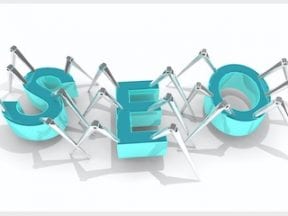Search engine optimization tools have evolved into measuring hundreds of variables. But not all of them impact performance in my experience.
What follows are seven common SEO metrics to ignore or relegate to a glance.
1. URL Length
In 2015, Google’s Gary Illyes explained that URL length does not matter to Google as long as it’s under the HTTP limit of 2,083 characters. He stressed that there are no Google ranking signals related to URL structure.
Home pages and category and subcategory pages tend to drive most organic search traffic. Those pages also tend to have shorter URLs. Thus search optimizers sometimes link shorter URLs with a higher likelihood to rank. However, it’s a meaningless correlation. You can ignore this metric.
2. Multiple H1 Headings
Having multiple H1 headings on a page was once an SEO blunder. But no more. Google’s John Mueller addressed the issue in a YouTube video, saying simply, “It’s not a problem.” Mueller explained that HTML5 frequently uses multiple H1 headings.
Moreover, the importance of H1 headings has decreased, likely due to their proliferation. As a result, when an SEO tool warns you about excess H1s, you can move on.
3. 302 Redirects
Historically, 302 temporary redirects did not pass Google PageRank to the destination page, making 301 redirects the SEO-preferred option. However, since at least 2016, Google has stated repeatedly that 302 redirects work the same as 301s, passing 100 percent of the PageRank to the destination page.
Nonetheless, SEO tools persist in alerting sites to the presence of 302 redirects. Certainly there are reasons to prefer 301s — for example, 301s prompt deindexing while 302s do not. But passing link authority is not one of them. As a result, this metric deserves little more than a glance.
4. Title Tag Length
Google usually shows 60 title-tag characters in its search results pages. Thus SEO tools often issue alerts when titles are longer.
But frequently ecommerce title tags don’t fit in 60 characters. Many product names are longer, and that’s before adding a branding signature to the end. Blog headlines are often longer than 60 characters, too.
The key is to insert the critical words that identify the page’s unique purpose into the first 60 characters so that searchers can see them. That would increases clicks and thus influence rankings.
But title tag length, alone, does not matter for organic search rankings.
5. Meta Description Length
The same scenario applies to meta descriptions. Google will show a description of not more than 920 pixels in search results — about 158 characters. This is the info Google considers most relevant to the searcher’s query. While they don’t impact ratings, meta descriptions can influence a searcher’s decision to click on your listing.
Google does not always display custom meta descriptions. But frequently it does. That’s why it’s important to craft meta descriptions that use the targeted keywords and include a call to action.
The key is to optimize the formula for essential keywords, not length.
6. Text-to-HTML Ratio
The optimal amount of text on a page varies based on its purpose. Many pages on an ecommerce site have little text because their purpose is to showcase product images and link to product detail pages.
For example, a category page could be highly optimized with only 50 words and still trigger a low text-to-HTML alert from an SEO tool. Similarly, a long-winded article might be poorly optimized without triggering an alert.
The amount of text on the page is a poor indicator of ranking ability.
7. Internal Link Quantity
SEO tools typically warn against inserting more than 100 internal links per page. But ecommerce sites nearly always exceed that number Amazon links to 319 internal pages on its home page. Walmart includes an outlandish 777 internal URLs.
Depending on the product catalog, you may have no choice but to link to more than 100 internal pages in your header navigation alone. As long it provides a positive customer experience, the number of pages in your internal linking structure is more or less irrelevant.



